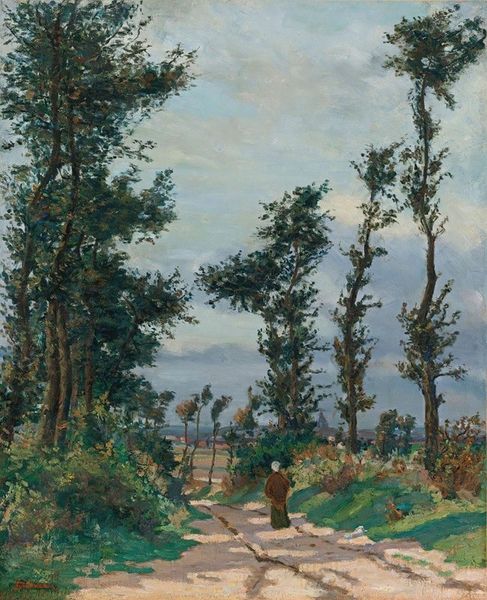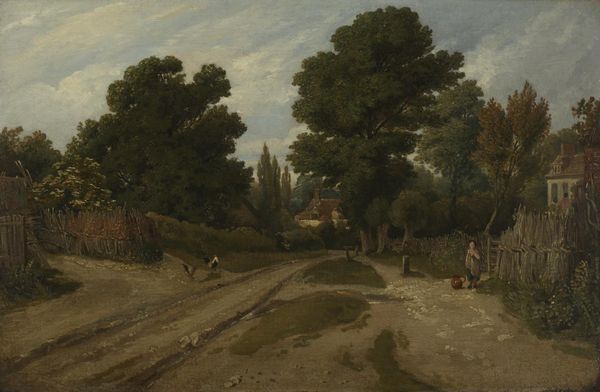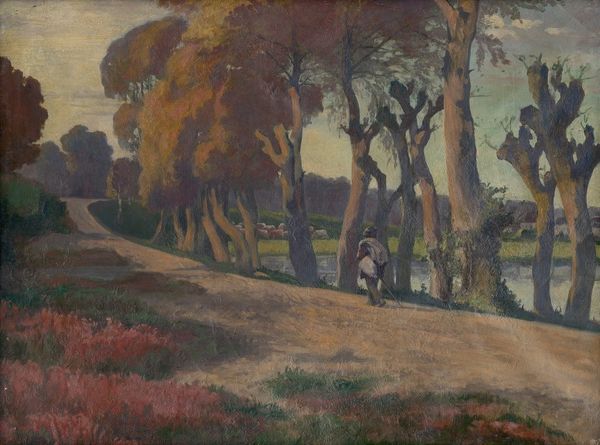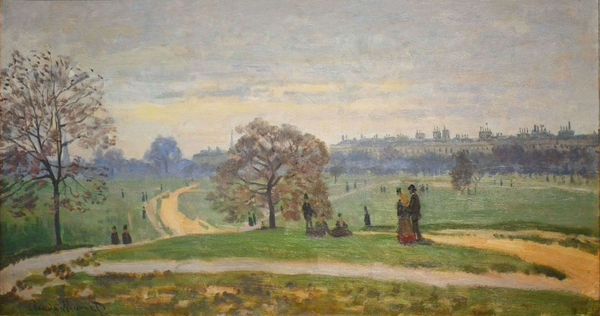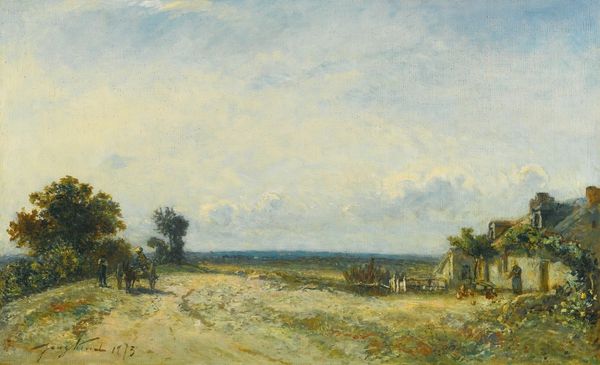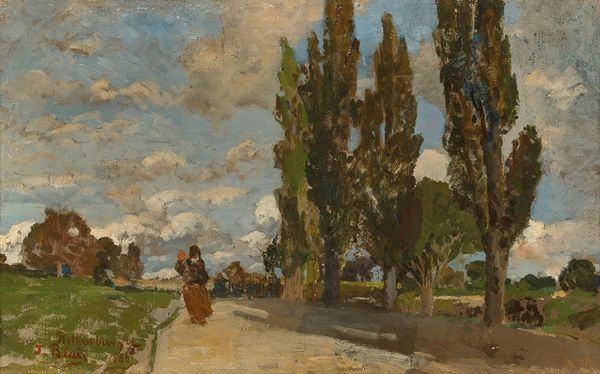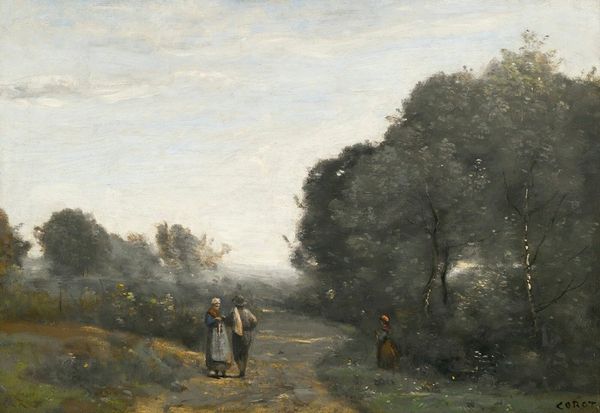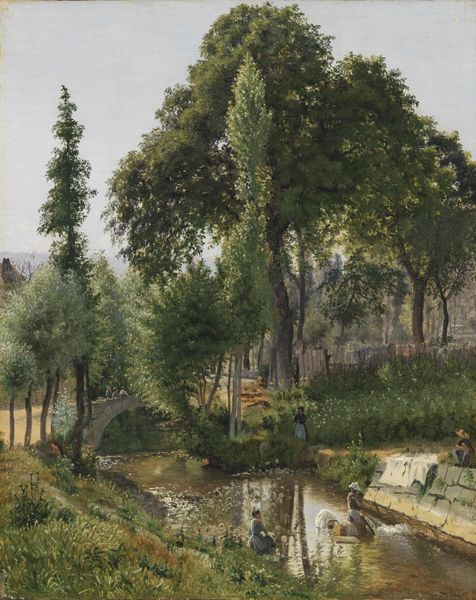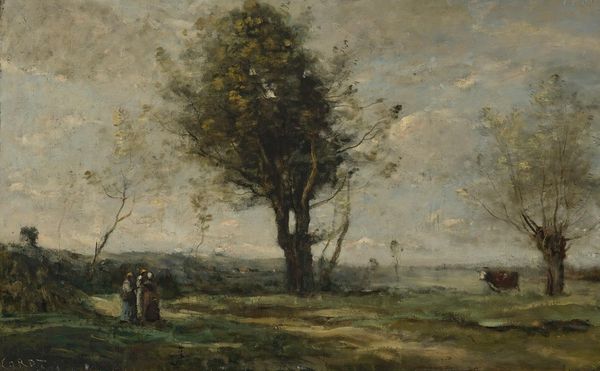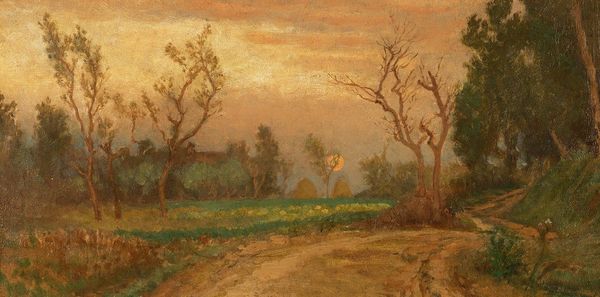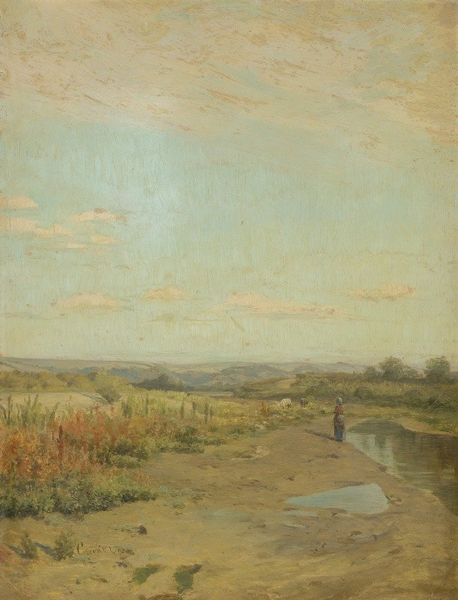
painting, plein-air, watercolor
#
painting
#
plein-air
#
landscape
#
impressionist landscape
#
oil painting
#
watercolor
#
romanticism
#
line
#
cityscape
#
watercolor
#
realism
Copyright: Public Domain: Artvee
Curator: David Cox, working around 1835, invites us down “The Poplar Avenue, after Hobbema,” executed in watercolor. It's interesting, isn't it, how Cox, steeped in English Romanticism, chose to revisit Hobbema's iconic Dutch scene? Editor: Yes, the avenue definitely pulls you in, but something about the diffused light and earthy tones gives it a melancholic feel, almost as if time is slowing down as you walk into the past. It evokes a very personal kind of nostalgia. Curator: Nostalgia, yes. Hobbema's original, of course, presents a very clear orthogonal structure—the road, the trees—rigid and precise as they lead back into space, conforming to mathematical perspective, as one might expect from 17th century baroque conventions. Cox here certainly echoes that, but with a lighter, more ephemeral touch, almost like a memory fading at the edges. Look at the broken brushstrokes of the clouds and that deliberately indistinct tower on the horizon. Editor: Those softer edges transform the symbolic weight of the image, don't they? Where Hobbema feels almost like a claim to ownership of the land, a very Protestant work ethic imbued with national pride, Cox seems to hint at a more transient experience. He emphasizes a harmony with the landscape, perhaps. Notice the figure tending the young trees on the right, connecting humankind intimately with the avenue. Curator: An excellent observation. Also consider the light: the warm ochres, sienna, and pale blues generate that overall subdued effect we spoke of. Notice how it avoids any sharp contrasts; a uniform atmospheric perspective minimizes detail as your eyes drift toward the horizon line. This gives the piece a compositional unity even as the subject is highly classical. Editor: It also emphasizes, perhaps subconsciously, the cycle of life, doesn't it? The trees in their various stages of maturity along the road… and also a kind of transience as the person on horseback approaches from a distance... What this avenue might represent to that traveler on their journey... Is it shelter? Comfort? Transformation? Cox, like Hobbema before him, offers the viewer an opening for symbolic navigation through familiar spaces and introspective moods. Curator: You're quite right. It's the image's enduring quality: how this seemingly straightforward landscape can still trigger personal connections, filtered through each viewer's individual lexicon. Editor: Indeed. Cox borrows from a historical canon but makes the iconic vista remarkably… ours.
Comments
No comments
Be the first to comment and join the conversation on the ultimate creative platform.

